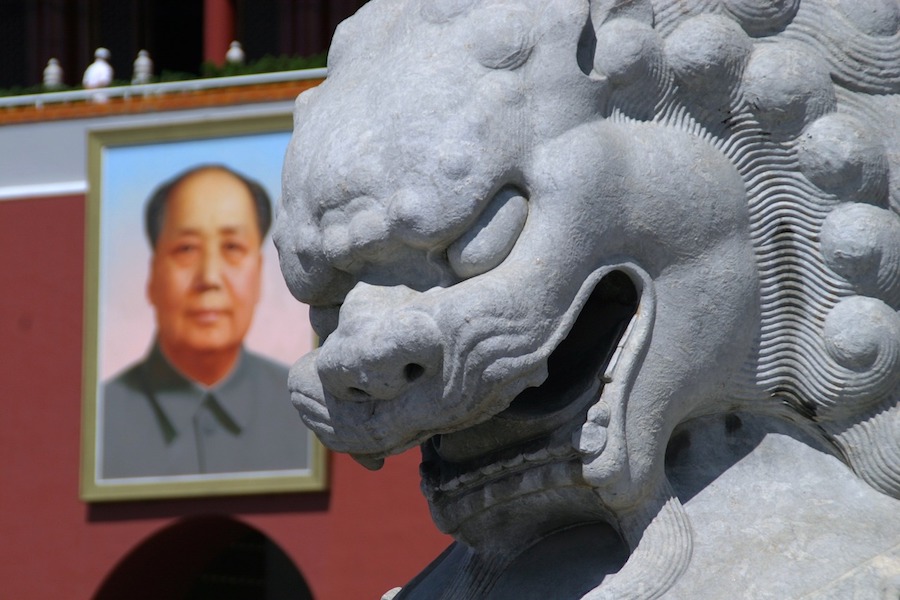
A walk down memory lane
Xu Guangxian, a U.S. educated chemist, developed China’s first rare earth processing technology (circa 1972). Xu eventually helped successive Chinese leaders develop China’s national rare earth policies, culminating in the equivalent of 5 Rare Earth National Laboratories and the restrictive export policies that force foreign intellectual property & manufacturing inside China.
Changes by the US Nuclear Regulatory commission (NRC) and the International Atomic Energy Agency (IAEA). in the 1980’s amended the definition of source material. The latter action classified all valuable Rare Earths found in monazites and other thorium bearing ores including Heavy Rare Earths, as a precursor nuclear fuel. Heavy Rare Earths critical for national and energy security, could no longer be extracted and processed in the US or other IAEA member states due to the elevated radioactive (thorium, uranium) content.
Other nations did not yet see the value of rare earths, as the Neodymium( (NdFeB) magnet was not invented until 1982, the entire rare earth value chain quickly shifted to China. Companies like Molycorp, Rhodia and Japanese industries voluntarily transferred all rare earth mining, refining and metallurgical technology to China (circa 1980s). The goal was to lower their cost for finished materials lower their cost for finished materials and transfer the environmental problems away. . Today political actors want you to believe that these technologies were stolen, this is not true. See chronological history of how the U.S. helped transfer the rare earth industry to China.
Other nations did not yet see the value of rare earths, as the Neodymium magnet was not invented until 1982, the entire rare earth value chain quickly shifted to China
China is not constrained by the same regulation (having IAEA “observer status”), that is why they were able to replace the US and other countries in the production and processing of Heavy Rare Earths. Today, China manages a monopoly over the Rare Earth value chain.
The conversation continues in the next article with a quick history on how China’s success in gaining control over rare earths became the model for other critical materials.
Rare earths are so central to the Chinese government’s goals and aspirations that four of the last five national leaders have personally enacted national rare earth programs. More telling, at least two of the last five Chinese leaders, Deng Xiaoping and Xi Jinping, have (had) considerable family investments in the rare earth refining and metallurgical industry. In 1997 Deng’s family acquired Magnequench, the only U.S. producer of Neodymium (NdFeB) magnets and moved it to China. Xi’s family held close to $400 million in Rare Earth refining and metallurgical companies before he came to power.
How did it start?
For China to build its monopoly it needed to exploit its cost and scale advantages to displace all other resource producers. At the time, over 70% of China’s rare earth production was a no-cost byproduct of a single iron ore mine.
Once it had control over the production of resources it moved up the value chain (with help from the U.S., France and Japan).Next, China mastered refining, separation, metallurgy, alloys and magnets and displaced all competitors (Japan, the last non-Chinese virgin- metal producer, quit new metal production in 2018).
China uses infrastructure financing, debt relief and capital injections as part of its One Belt, One Road initiative to cultivate long-term resource off-take agreements for concentrates and oxides
With China in control over the entire value chain it could focus on the more strategic points in the downstream value chain. Around 90% of all RE value comes from just 4 elements: Neodymium(Nd), Praseodymium(Pr), Dysprosium(Dy) & Terbium (Tb). 95% of all RE value comes from RE metals, alloys, and magnets (primarily composed of Nd, Pr, Dy & Tb). The other 13 non-metallic elements collectively comprise 5% of the value (La, Ce, Sm, Gd, & Y have significant to modest negative values).
China determined early on that it could eventually shed mining and eventually refining of rare earths, as these commodities (concentrates and oxides) have no high-value applications. Sometime after 2015 China actively began cultivating resource production outside of China. The twin goals were to offshore the environmental issues and preserve domestic resources. This strategy is wildly successful, with China’s main adversaries directly funding mining and refining projects in the US, Canada and Australia that will continue to feed China’s metallurgical monopoly.
China currently provides a net-positive margin environment for non-Chinese resource producers to supply RE concentrates and mixed oxides to China. China will incrementally support non-Chinese production of refined and separated oxides because this is the most environmentally damaging part of the process. China uses infrastructure financing, debt relief and capital injections as part of its One Belt, One Road initiative to cultivate long-term resource off-take agreements for concentrates and oxides. China can safely cultivate new non-Chinese resource producers because these prospective competitors cannot move beyond separated oxides.
Why? Because China uses opaque subsidies to eliminate any profit potential for competitors. No profit potential, no competitors, China’s metallurgical monopoly remains secure and contested.
Part 2 of 4
Jamil Hijazi: Jamil is a Mineral Economist and Energy analyst who holds a Dual Master’s Degree from the University of Dundee Centre for Energy, Petroleum, Mineral Law and Policy (CEPMLP). His expertise and research interests are in Supply Security of Critical Raw Materials, Energy transition, Local Content and Development in the Extractives Industry.
James Kennedy is President of ThREE, a consultancy focused on the geopolitical, national security and economic, ramifications of China’s rare earth and critical materials monopoly. He currently consults private industry, the U.S. Federal government and other governments on macro issues and trends related to rare earths, critical materials, and thorium (waste and energy systems).




